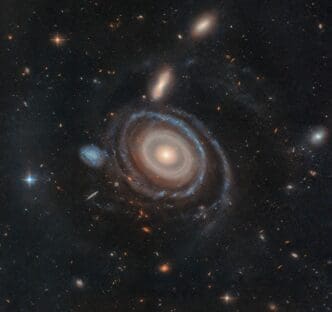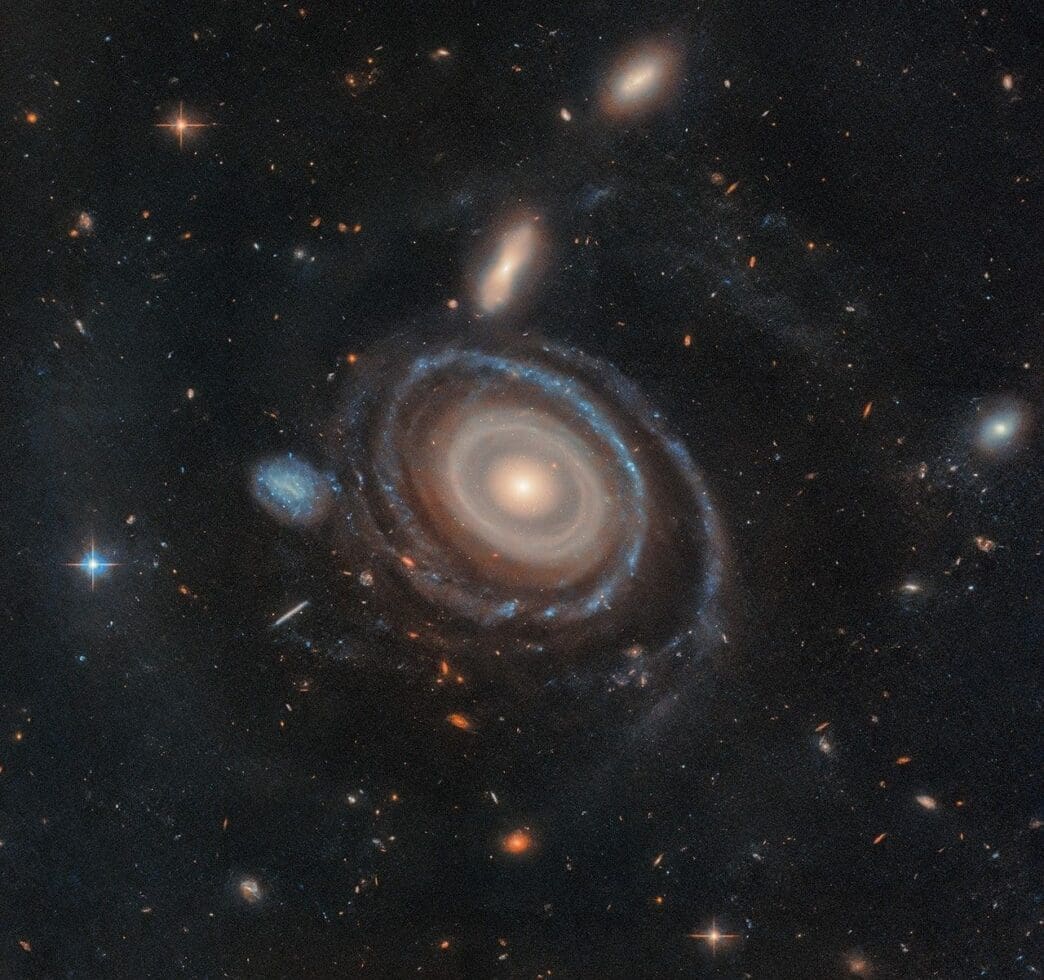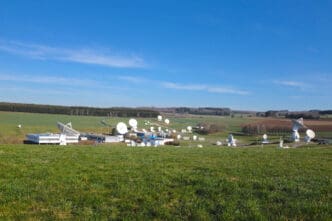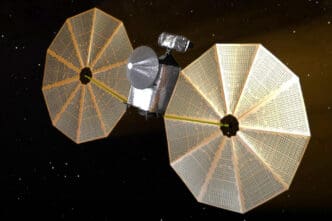Imagine peering into the vastness of space and witnessing a cosmic bullseye—a spectacle so unique, it’s captivated astronomers globally. That’s exactly what NASA’s Hubble Space Telescope has achieved in its observation of the galaxy LEDA 1313424, now nicknamed the Bullseye.
This stunning galaxy, two and a half times larger than our Milky Way, dazzles with nine star-studded rings. It’s a remarkable phenomenon sparked by a smaller blue dwarf galaxy shooting through its core. The discovery has set the astronomical community abuzz with curiosity and excitement.
The Unexpected Find
Hubble unexpectedly stumbled upon the Bullseye galaxy, a serendipitous discovery that has unfolded layers about our universe. Nine distinct rings ripple through the backlit vastness, unlike any other galaxy known. Each ring tells a story of cosmic interplay, initiated by a smaller galaxy’s dramatic journey through the Bullseye.
Astronomers, led by doctoral student Imad Pasha, noticed these rings while examining ground-based surveys. Their immediate attention was drawn to the clarity and number of rings, sparking further investigation. This chance discovery showcases the indispensable role of Hubble’s high-resolution vision in unraveling cosmic mysteries.
The Bullseye’s impressive size and ring formation stem from a cosmic event 50 million years ago. When a blue dwarf galaxy darted straight through its center, it left behind these captivating ripples, much like a rock tossed into a pond leaving the water dancing with waves.
Decoding the Rings
The galaxy’s nine rings are no mere accident; they align with predictions from long-established theories on galactic behavior. This correlation delights researchers, affirming the accuracy of models developed to anticipate such astronomical features.
Hubble’s observations reveal the galaxy’s rings from a slight angle, suggesting that, viewed from above, the rings would appear neatly aligned. Such an insight helps astronomers understand the spatial distribution of mass and the dynamics that govern galaxy evolution.
Understanding these rings involves more than identifying their presence. Each of these rings is a result of stars and gases thrown into motion by the blue dwarf’s passage, creating regions ripe for new star formation and altering the Bullseye’s luminosity.
Galactic Collision Course
Galactic collisions and close encounters happen frequently in the universe, yet a direct hit like this one is a rarity. The blue dwarf’s precise trajectory through the Bullseye is a cosmic game of billiards on a grand scale.
The resulting ripple effect propelled material outward and inward, triggering bursts of new stars. This sequence of events has crafted the Bullseye into not just a larger galaxy, but one adorned with these extraordinary rings.
The scale of this impact event is underscored by the Bullseye’s size—at 250,000 light-years across, it’s immense compared to our Milky Way’s mere 100,000 light-years. Such grand dimensions offer a fascinating laboratory for studying galactic interactions.
Beyond the Visible
Astronomers suspect a tenth ring may have existed, faded from view over eons. This hypothesis hints at the transient nature of these fascinating structures.
Each ring, formed like ripples on water, is a testament to the Bullseye’s dynamic history. The possibility of undetected rings adds layers to the universe’s ever-evolving story.
Further exploration promises to discover more hidden rings and deepen understanding of such galactic phenomena, showcasing the universe’s relentless transition.
Implications for Astronomy
This discovery is a remarkable validation of theoretical models predicting ring formation in galaxies after collision events. As more insights emerge, they refine the understanding of how galaxies like Bullseye might continue to evolve.
These findings enrich the methodology of galactic studies, providing a template for future observations and a deeper grasp of cosmic event cascades.
The Bullseye’s case exemplifies how celestial beginnings can influence a galaxy’s fate, shaping everything from its structure to its capacity for star generation.
Future Discoveries Await
Looking ahead, the launch of NASA’s Nancy Grace Roman Space Telescope promises a new chapter of exploration, potentially unearthing more galaxies marked by such extraordinary collisions.
With enhanced technological capabilities, astronomers will probe deeper into the universe, hoping to uncover the rarity of events like the Bullseye’s, enriching our cosmic perspective.
Continued advancements in space observation assure a wealth of future discoveries, each contributing to the tapestry of cosmic narrative we strive to unravel.
Bullseye’s Cosmic Scale
The Bullseye’s immense scale is a focal point of intrigue, providing a stellar context for examining massive cosmic evolutions.
The galaxy’s sprawling rings are like a treasure map, guiding astronomers through the expanse of its history and dynamics.
By contemplating its vastness, scientists hone their hypotheses about galactic mechanics and interactions.
Technological Triumphs
Hubble’s ability to capture such phenomena is a testament to the collaborative efforts in space science, involving both NASA and ESA.
This partnership underscores the human pursuit of understanding the universe, transcending borders and disciplines.
The collective achievements in space observation invite optimism for the insights yet to come.
The Bullseye galaxy, with its striking rings, represents a rare cosmic spectacle that bridges theoretical predictions and astronomical discovery.
As technology advances, the universe continues to reveal its marvels, urging a relentless quest for knowledge beyond our cosmic shorelines.







